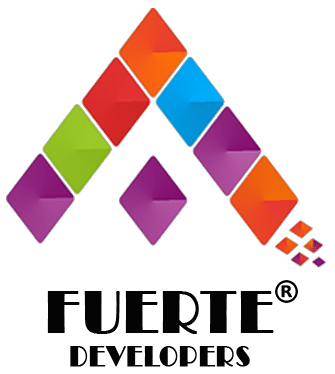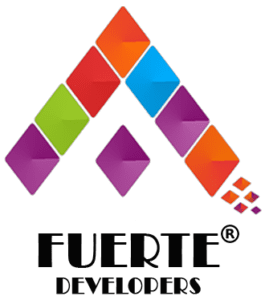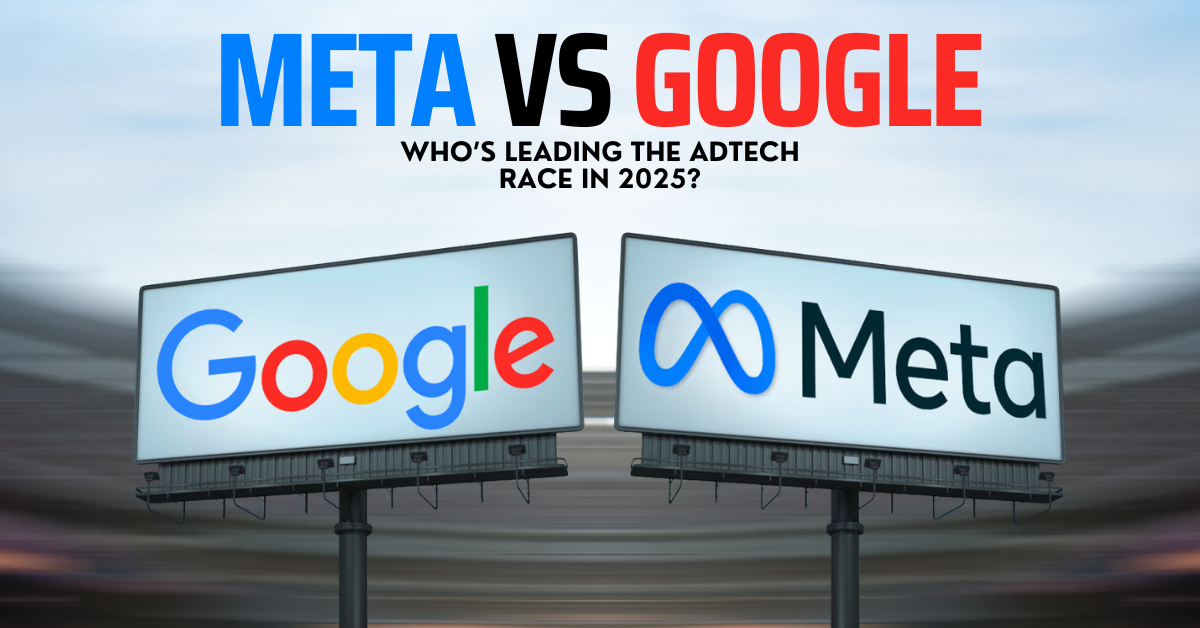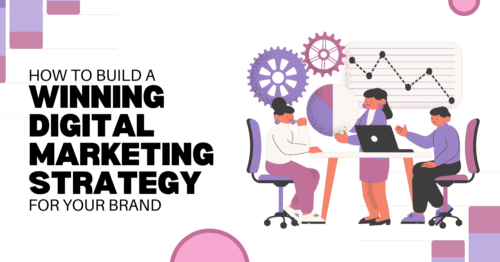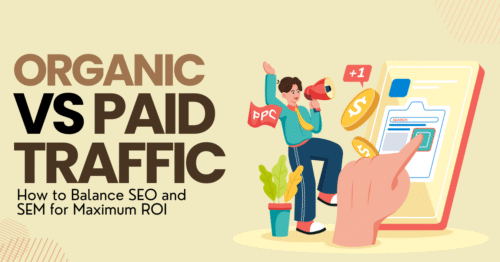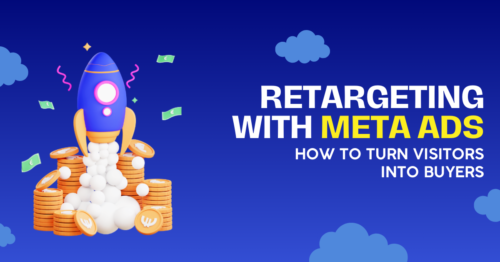In the world of digital advertising, two giants continue to dominate the global conversation—Meta (formerly Facebook) and Google. These two companies not only hold the largest market shares in digital ad spending but also dictate how billions of dollars are allocated in programmatic advertising, influencer marketing, search ads, and video campaigns.
As we step deeper into 2025, the question on every marketer’s mind is: Who is winning the AdTech race—Meta or Google?
Let’s break it down across technology, targeting, innovations, market share, and what it means for brands.
📊 Digital Ad Spend in 2025: Market at a Glance
The global digital ad spend is projected to cross $700 billion in 2025, with Meta and Google controlling nearly 50% of that spend combined. Google still dominates search and YouTube ads, while Meta leads in social display and video formats.
| Platform | 2025 Market Share Estimate | Core Strength |
|---|---|---|
| 28–30% | Search, YouTube, Display | |
| Meta | 20–22% | Facebook, Instagram, Reels, WhatsApp Business |
🚀 1. AdTech Innovation: Who’s Building Smarter Tools?
🟦 Google’s Edge: AI-Driven Performance
Google has heavily leaned into AI-powered automation for search and performance ads. Its Performance Max campaigns, now upgraded with real-time contextual signals and predictive bidding, allow advertisers to optimize across Search, YouTube, Gmail, Maps, and Display in one go.
What’s new in 2025:
Deeper integration with Gemini AI
Cross-platform attribution across Google Workspace apps
Enhanced zero-click search analytics
Strength: Unified intent-based advertising across the funnel
🔵 Meta’s Push: Creators + Conversational Commerce
Meta has shifted focus toward creator-led content, AI-driven video ads, and in-app shopping integrations, especially on Instagram Reels and WhatsApp.
What’s new in 2025:
AI avatars for automated customer service and upselling
Advanced click-to-message ads with WhatsApp flows
More native commerce features within Facebook Shops and IG
Strength: Deep consumer engagement inside social apps
🧠 2. Audience Targeting & Data
In a post-cookie world, first-party data is king.
✅ Google’s Power: Search + Chrome + Android
Google has an edge in owning intent-rich ecosystems: Search, YouTube, Chrome browser, and Android. Its Privacy Sandbox API is rolling out globally this year, changing how advertisers target without third-party cookies.
Large-scale contextual targeting
Topic-based interest signals
Predictive user cohorts (FLoC replacement)
✅ Meta’s Advantage: Behavior + Social Graphs
Meta may not have Chrome, but it still owns the richest behavioral datasets from Instagram, Facebook, and WhatsApp. Their shift toward private messaging-based ads (especially WhatsApp for Business) gives them an edge in closed-loop marketing.
Lookalike audiences remain strong
Engagement-based retargeting is rising
Meta AI helps customize campaigns at scale
3. Performance & Attribution
📈 Google: Search Conversion King
If you want bottom-funnel ROI, Google is still unmatched. Search ads and YouTube Shorts now offer shoppable video formats, dynamic callouts, and multi-step purchase tracking.
With first-party conversion tracking across Google Tag Manager and GA4, attribution has become sharper—even with privacy changes.
📲 Meta: Better Social Commerce Tracking
Meta has doubled down on server-side APIs, offline conversion uploads, and even WhatsApp order tracking, especially for D2C and small businesses. Attribution is no longer just click-based; it now includes video view depth, message replies, and in-app purchases.
4. Privacy, Policy & Global Trust
⚖️ Google: Stricter with Rules, More Transparent
Google’s privacy sandbox rollout and efforts to phase out cookies while giving advertisers alternatives have earned praise—but also delays. Their Search Ads transparency reports are industry-leading.
⚖️ Meta: Facing Scrutiny, Yet Resilient
Meta continues to face global pressure over data practices and content moderation. Yet, it has shown resilience by building privacy-enhanced ad solutions, especially in Europe and India, where regulations are tighter.
5. Regional Strength: India, LATAM & Beyond
🇮🇳 India: WhatsApp Ads + YouTube Shorts
India is Meta’s experimental hub for WhatsApp Business APIs, while Google dominates with YouTube Shorts ads. Startups, D2C brands, and political advertisers are using both platforms differently.
Trend: India is becoming a test bed for conversational commerce, AI-led vernacular ads, and regional personalization.
Read more Top5 tools for FB and meta ads
Final Verdict: So, Who’s Leading?
There’s no single winner—because they’re playing different games.
| Category | Leader |
|---|---|
| Search & Performance Ads | |
| Creator + Social Engagement | Meta |
| Video + Intent Advertising | |
| Conversational Commerce | Meta |
| Data & Targeting Innovation | |
| Direct Response Campaigns | Meta (D2C) |
Both Meta and Google are co-leaders, carving their dominance across different parts of the customer journey. Smart brands in 2025 are not choosing between the two—they’re building strategies that combine the strengths of both.
Read more Meta vs Goggle ads
Follow Us | Our Services | Contact Us | Linkedin | Instagram
